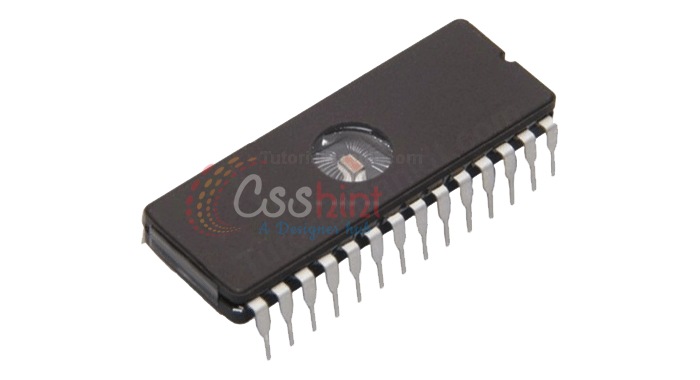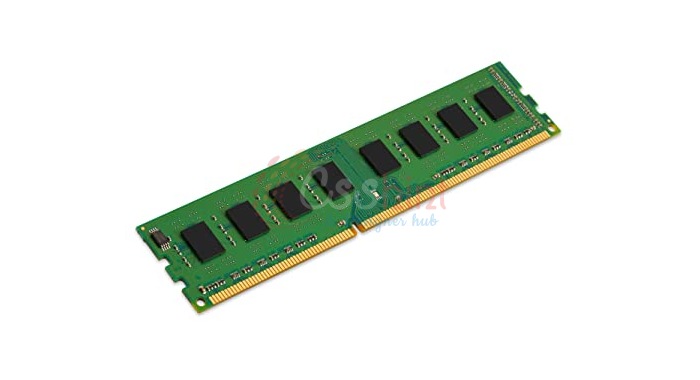ROM or Read-only Memory as the name suggests, stores data or information that can only be read. Modifying it further is either impossible or very difficult. ROM is a kind of non-volatile storage, which helps in storing information even if the component loses power.
ROM or Read-only Memory contains the programming codes or valuable information that lets your computing device regenerate or startup whenever the switch is on. ROM is also one of the most important computer accessories that execute massive input and output tasks and also help safeguards software instructions or programs. There will be no deletion of the data stored on a ROM chip.

What is ROM
Mostly computers or PCs integrate a small amount of ROM that hosts the startup firmware. BIOS or Basic Input Output System is another terminology for the boot firmware. There are various set of codes that makes up this software that directs to the computer boot-up functions and processes. This further includes carrying out hardware and software diagnostics and loading OS (Operating System) into the RAM (Random Access Memory).
Where ROM is Used ?
ROM can be used in the console of video games. This further permits a computer to execute various games, as well as in optical storage, also featuring varying compact discs (CD) like CD-RW.
ROM can be easily used on your Mobile Phones. It also functions as a type of data storage. This is the data repository that makes sure that data is not deleted from your phone when you switch it off.
If your SD card or Memory Card is not available, then the camera storage (which is equivalent to ROM in computers) becomes the site that stores your digital data or information.
Different Types Of ROM
ROM is also sometimes called mask ROM (MROM). It is also called static memory as it has data programmed into a circuit by its producer.
Below are listed different types of ROM:
EPROM (Erasable Programmable ROM) – This particular ROM type underwent its programming via exposure to ultraviolet light. It makes use of high voltages for a period of twenty minutes.
UV-ROM (Ultraviolet-Erasable ROM) – This UV-ROM can erase the data with the aid of UV light, and then easily be reprogrammed also as desired.
EEPROM (Electrically-Erasable programmable ROM) – This ROM type is frequently used to control the Basic Input/Output System, this ROM type also helps control more antiquated computer chips. You can easily wipe off the data and again reprogram it multiple times while enabling the writing and erasing of only one location simultaneously.
What ROM Stores?
ROM or Read-Only Memory is used in the storage of bootstrapping firmware, which is required to self-contained control internal devices like hard disks, graphic cards, TFT screens, and much more.
ROM does not require any further modification, it is well-suited or adapted for the storage of information or data that is not expected to change or be altered within the lifespan of the device. There is a number of benefits of using ROM like it finds its application in searching for look-up tables for logical, analytical, and mathematical functions evaluation. Let’s take an example like a floating-point number can compute the trigonometric functions to enable a quick estimation. This was very effective working during the period when CPUs were not working much faster and when RAM is also less expensive than ROM.
How ROM Works?
Just like RAM, ROM chips also contain a grid of rows and columns. But there is a difference in the intersection of the rows and columns of RAM and ROM. ROM makes use of a diode with which it links the lines in case the value is 1. On the other hand, RAM or Random Access Memory make use of transistors to accept or decline access to capacitors at each point of intersection. The lines will not get linked if the value comes out to be 0.
ROM chip works on programming of whole complete and perfect data when the ROM is produced. There can be a possibility that there will be no rewriting or reprogramming of a canonical ROM chip. The data or information would further require an update if it is inaccurate, or you have to discard the data and start with new. It is a very time-consuming and difficult process attempting to create a ROM chip’s original template using trial and error methods. The real chip will hardly cost just a few dollars when the template has been prepared or completed. These chips are highly reliable and consume lesser power and include all other factors needed to have the device controlled when dealing with any electronic devices.
Importance of ROM
ROM or Read-Only Memory is responsible for giving essential instructions needed for establishing an effective communication channel between the various components of the hardware. As stated above, it is vital for the operation and storage of the Basic Input/Output System. It can also be used for the primary management data, to write and read operations to peripheral devices, and to hold software for further fundamental processes of utilities.
Below are listed some of the uses of ROM:
- Can be easily tested.
- Does not require any refreshing operations.
- The data or information stored in ROM can easily be verified.
- ROM is more reliable than RAM due to its non-volatile nature.
- ROM provides you with cheaper storage solution when placed side-by-side with RAM.
How Much ROM Do You Need?
Recent times have witnessed a huge surge in the demand and availability of information or data. This has further led to the production of storage media that can store several degrees of data or information, depending on their functions and processes. Nowadays most smartphones or androids are now containing ROM capacities of more than 32 GB.
ROM is a very essential part of the computer and finds its huge applications like it is used in USB flash drives, MP3 players, digital cameras, modems, and solid-state drives. The effective storage of your valuable data or information has now become one of the essential things for people in the modern era. We hope you like the article and gain sufficient knowledge required.





